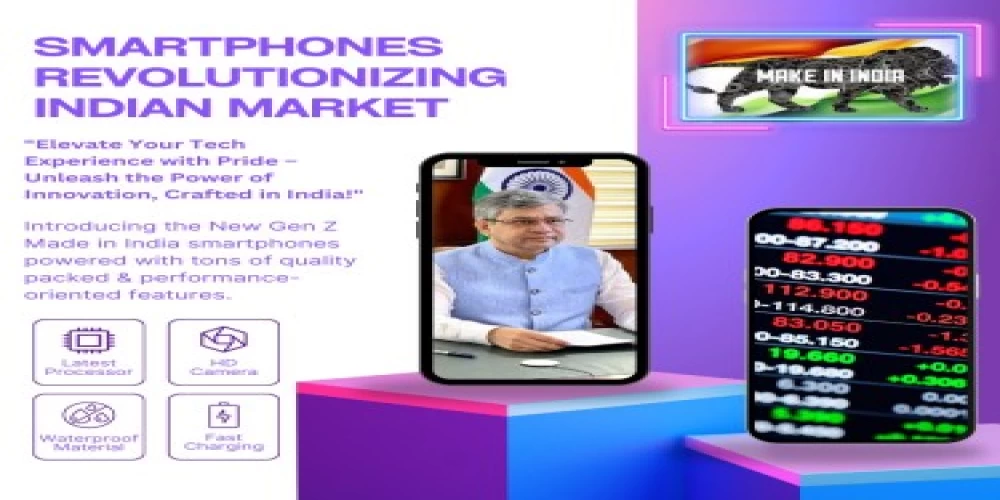
New Delhi: The Indian mobile industry’s success story underscores India’s capacity to transition from being predominantly import-dependent to emerging as the key player in mobile manufacturing on the global level. As India cements its status as a manufacturing hub for mobile devices, the “Made in India” label has now become synonymous with quality and innovation. As these indigenous smartphones ascend to new heights, they symbolize a transformative journey toward self-sufficiency, economic growth, and technological prowess in the realm of mobile manufacturing. The phrase "seek new heights" implies an aspiration for growth, success, and recognition on a broader scale. This succinct statement captures the dynamic spirit of India's self-reliance initiative in the smartphone industry, signalling a journey towards innovation and global competitiveness.
Made in India mobile phone shipment crossed 2 billion cumulative marks during the period 2014-2022 registering a 23% Compound Annual Growth Rate (CGAR) and is still expected to see a substantial amount of growth in the period 2023-2028. The huge international demand for technology has boosted digital literacy and the government’s push is a major reason for the industry’s growth.
Presently, 71% of the Indian population uses smartphones in India. Also, the average time that an Indian user spends on their smartphone in a single day is 4.9 hours. To communicate more about the industry's growth, we should investigate how brands have been dominating the market and how they target their audience. Also, how their sales work and what segments they specifically dominate resulting in a clear understanding of India’s “Made in India” smartphone growth.
In a highly competitive market with numerous brands and the emergence of sub-brands, India's mobile industry has witnessed significant shifts. Android smartphones dominate the landscape, constituting 96.45% of Indian users, while iOS holds a 3.55% share. To maintain market share, brands must strategically assess their target audience and incorporate value-for-money features. With Android phones spanning a wide price range from 10k to 1.6 lacs, brands regularly launch products to assert their presence and compete for consumer attention.
In contrast, iOS devices, being Apple's premium offerings, target the business elite with higher prices. Apple commands a substantial 63% market share in the luxury mobile market in India. The elevated cost of Apple's components and repairs, compared to Android, contributes to its limited dominance. Since 2014, the Indian market has witnessed global and Indian brands dominating different segments. Indian brands, initially dominating the budget segment, faced challenges as global competitors offered more features, leading to closures or reduced growth.
Under the Atmanirbhar Bharat initiative, global brands actively contribute to the growth of the Indian mobile industry. This involvement extends to reaching individuals in non-digitalized areas, contributing to the industry's expansion. The imposition of a 22% import duty on smartphones sold in India, coupled with additional customs and social welfare charges, affects the pricing of imported devices.
However, the localization of manufacturing has led to more cost-effective products, boosting sales, and expanding the Indian smart phone market.
The positive outcomes have prompted brands like Google to plan manufacturing in India by 2024, and others are establishing more manufacturing units by 2028. These developments underscore the significant impact of both global and domestic efforts on the growth and sustainability of the Indian mobile industry.
The recent statement of Ashwini Vaishnav (Minister for Railways, Communications, Electronics & Information Technology, Government of Bharat) that 99.2% of smartphones used by citizens of India are “Made in India” products under the initiative Atmanirbhar Bharat, which is 20 times growth since 2014, displays the aspirations of New India scaling newer heights and celebrating the accomplishments of the industry. A moment of pride as it creates a course towards self-reliance in the technology sector.












